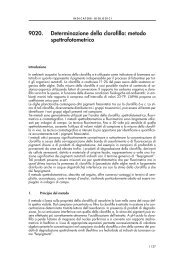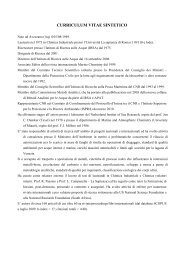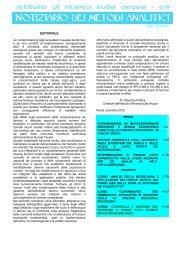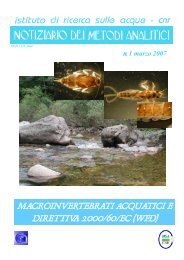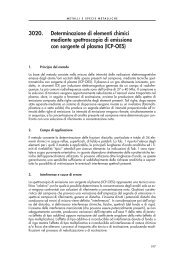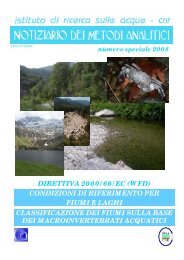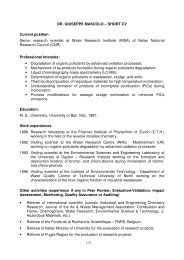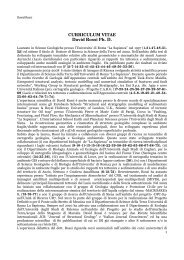The Nanga Parbat-Haramosh Monitoring Network - IRSA - Cnr
The Nanga Parbat-Haramosh Monitoring Network - IRSA - Cnr
The Nanga Parbat-Haramosh Monitoring Network - IRSA - Cnr
You also want an ePaper? Increase the reach of your titles
YUMPU automatically turns print PDFs into web optimized ePapers that Google loves.
linking to the permanent GNSS station in Lhasa, the shift of the point was computed to be<br />
of 4.2-4.5 cm/year (Poretti G., 1998) to the North-East with an azimuth of approximately<br />
45°.<br />
A research project carried out between June 2009 and November 2010 is trying to<br />
find out the uplift and the direction of the movement of the <strong>Nanga</strong> <strong>Parbat</strong> area with the<br />
installation of three permanent GPS stations (Islamabad, Gilgit and Skardu) that will be remeasured<br />
every year for the next five years.<br />
Conclusions<br />
<strong>The</strong> aim of the project is to evaluate the variation in elevation and direction of the<br />
<strong>Nanga</strong> <strong>Parbat</strong> massif and to compare these results with those obtained from Everest in<br />
order to understand if their movements can be correlated in amount and direction. After<br />
only one year it is seems that the movement of the <strong>Nanga</strong> <strong>Parbat</strong> area is more bended to<br />
the East, but it is still too early to draw conclusions that are not within the margin of error of<br />
the instruments employed. More reliable results will be obtained from the repeated<br />
observations during the next 2-3 years.<br />
<strong>Nanga</strong> <strong>Parbat</strong> from the Rama Bungalow Mt. Everest from Rongbuck<br />
References<br />
1. Gansser, A., 1964. Geology of the Himalayas. Wiley Interscience, London. 289 p., & 4 plates.<br />
2. Finetti I., F. Giorgetti, G. Poretti, 1979, <strong>The</strong> Pakistani segment of the DSS Profile <strong>Nanga</strong> <strong>Parbat</strong>-Karakul (1974-<br />
1975). Bollettino di Geofisica Teorica e Applicata, v. XXI, n. 83, pp. 159-171.<br />
3. Seeber L. & V. Gormiz, 1981. River profiles along the Himalayan arc as indicators of active tectonics.<br />
Tectonophysics<br />
4. Tahirkheli, R. A., 1982. Geology of the Himalaya, Karakoram, Hindukush in Pakistan. Geol. Bull. Univ. Peshawar.<br />
5. Finetti I., G. Poretti, M. A. Mirza, 1983, Crustal Structure of the Karakorum Range along the DSS Profile <strong>Nanga</strong><br />
<strong>Parbat</strong>-Karakul. Bollettino di Geofisica Teorica e Applicata, v. XXV, n. 99-100, pp. 195-205.<br />
6. Ebblin C., A. Marussi, G. Poretti, M. Rahim, P. Richardus, 1983, Gravity Measurements in the Karakorum.<br />
Bollettino di Geofisica Teorica e Applicata, v. XXV, n. 99-100, pp. 303-316.<br />
7. Lyon-Caen H. P. Molnar 1983, Constraints on the structure of the Himalaya from an analysis of gravityanomalies<br />
and a flexural model of the lithosphere. Jornal of Geophys. Research, v. 88(NB10), pp. 8171-8191.<br />
8. Windley B. F., 1986, <strong>The</strong> evolving Continents. J. Wiley & Sons, NY, 400 p.<br />
9. Zeitler, P.K., 1985, Cooling history of the NW Himalaya, Pakistan. Tectonics. v. 4, pp. 127-151.<br />
10. Coward, M.P., Butler, R. W. H., Khan, M. A. & Knippe, R. J., 1987. <strong>The</strong> tectonic history of Kohistan and its<br />
implications for Himalayan structure. Journal of the Geol. Soc. London, v. 144, pp. 377-391.<br />
3




